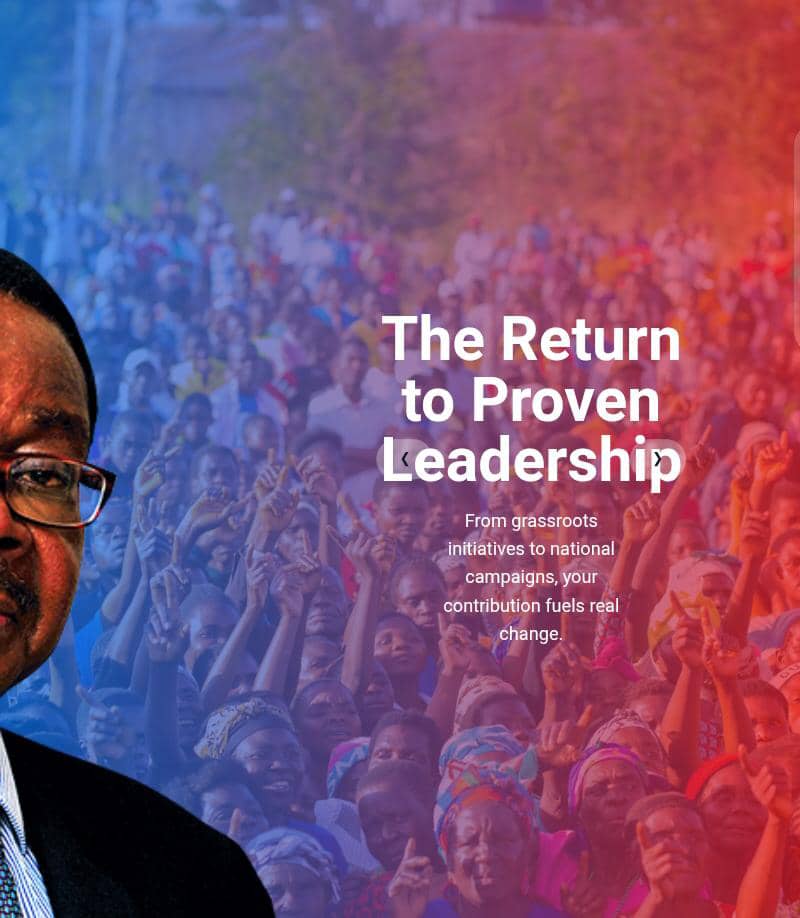By Burnett Munthali | Malawi Freedom Network
The Democratic Progressive Party (DPP) positions its 2025–2030 manifesto as a blueprint to transform Malawi into an inclusively wealthy, self-reliant, and industrialised upper-middle-income nation in line with Malawi 2063.
The party describes Malawi’s current status as one of the least developed countries in the world, calling this reality unacceptable and in urgent need of change.
It attributes the nation’s economic vulnerabilities to a fractured political and economic history inherited from the Kamuzu Banda regime, which left Malawi heavily reliant on agriculture for employment and foreign exchange.
The DPP highlights the lack of value addition and limited light manufacturing as critical weaknesses in the economy.
Given that most agriculture is rain-fed, the party warns of the economy’s susceptibility to weather-related shocks and natural resource depletion.
The manifesto acknowledges longstanding constraints on economic performance, including poor infrastructure, policy inconsistency, corruption, high population growth, macroeconomic instability, and natural disasters.
It also points to poor health and education outcomes, which undermine labour productivity.
In recognising Malawi’s potential for growth in manufacturing, tourism, and mining, the DPP is critical of past efforts, citing insufficient political will, leadership incompetence, unreliable energy supply, inadequate skills, inconsistent planning, and an underdeveloped financial sector.
Population dynamics are a prominent part of the DPP’s vision, with the current population at just over 22 million, projected to reach 24 million by 2030 and 45 million by 2063.
The party notes that women make up 51 percent of the population in 2025, and 51 percent of citizens are under the age of 18, creating a potential youth dividend.
While most Malawians still live in rural areas, the manifesto observes rapid urbanisation, with annual urban growth exceeding 5 percent and expected to surpass rural growth by the end of 2025.
The DPP points to its 2014–2019 record as evidence of its ability to deliver on promises.
It claims that no one died of hunger during its administration despite droughts and floods.
Rain-fed agriculture reliance was reduced by 13 percent, with 116,000 hectares of land brought under irrigation.
Inflation was brought down from 27 percent in 2014 to single digits by 2020.
Foreign exchange reserves were increased to cover more than six months of imports, compared to less than one month in 2014.
In education and skills development, the DPP cites the construction of 20 community colleges, with eight more underway in 2020, and training for over 6,000 youths in technical, vocational, and entrepreneurial skills.
University enrolment more than doubled, from around 10,000 students in 2014 to over 25,000.
In housing, 22,000 vulnerable households benefited from the Decent and Affordable Housing Programme (DAHP), also known as the Malata and Cement Subsidy Programme.
The manifesto also recalls that under the DPP, Malawi’s economy was once the fastest growing in the SADC region.
Infrastructure development was a key area, with major roads rehabilitated or constructed across the country, including the Chikhwawa–Ngabu–Bangula road, Lilongwe West Bypass, Zomba–Blantyre road, Jenda–Edingeni road, Milepa–Chiradzulu road, Zomba–Jali–Phalombe–Chitakale road, Thyolo–Thekerani–Muona–Makhanga road, Liwonde–Mangochi road, Lilongwe Old Airport–Kasiya–Kasungu road, Mzuzu–Nkhatabay road, Karonga–Songwe road, Njakwa–Livingstonia road, and Thabwa–Chitseko–Seveni road.
Concluding Analysis
The DPP’s 2025–2030 manifesto blends a bold future vision with a detailed recounting of past achievements, seeking to persuade voters that its track record proves its competence to deliver.
Its emphasis on Malawi 2063 goals, youth demographics, and economic diversification suggests a strategic understanding of long-term national priorities.
However, the manifesto also implicitly acknowledges that many of the structural problems it cites today—such as unreliable energy, corruption, and inadequate skills—were present during its time in government, raising questions about why they remain unresolved.
If the DPP can convincingly explain how its new strategies differ from past approaches and address systemic governance challenges, its promises of industrialisation and inclusive wealth creation may resonate strongly with voters.
Without that clarity, its ambitious goals risk being seen as a continuation of past rhetoric rather than a new roadmap to genuine transformation.




